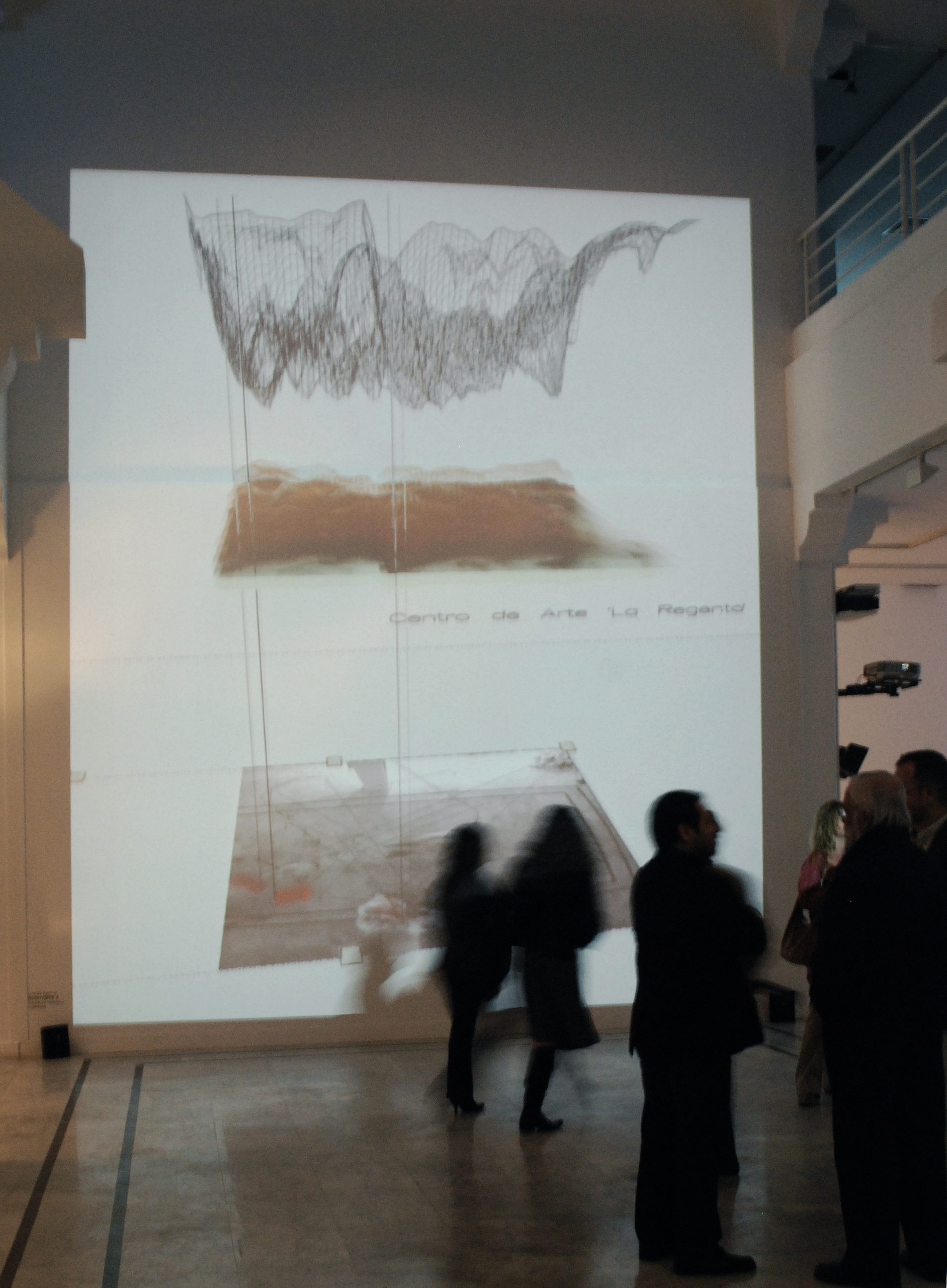
After 1989 a series of drawings of geometric patterns, to be considered as mathematical descriptions
of space, evolved out of earlier sculptural works. Space became declined in its proportional
rhythms of finite and infinite dimensions and recursions. The pattern drawings which developed
are a canon of shapes intended as the foundation for large-scale urban planning.The polymorphism
of the patterns enables individual elements to be inserted into already existing proportions,
generating a calculated description of the “new” from the already existing “old”.
The result of these calculations was a set of basic geometric forms with a long-range effect forming
the basis of the first interactive installation “trace pattern”. In this installation patterns are
automatically calculated and linked to the movement of people walking in a particular space.The
resulting proportions can be examined “virtually”.
For “inoutsite” (see also http://www.inoutsite.de) a tracking-software was developed specifically
for the surveillance of public spaces (programm authors:Thomas Kulessa and Matthias Weber).
This experience with the machine processing of traces of movement brought about a gradual
shift in the main focus of the work – from the construction of descriptive models to the observation
of movements. In the installation of the “inoutsite” project the frequency of visits to the site
under surveillance was analysed and then translated into image and sound.The resulting virtual
three-dimensional shapes can be considered as the first virtual architecture.
Inoutsite I und II zeigen die Statistik der Raumnutzung.

The red arrrows point in the direction of walking, the lines are the traces of people in the space. The height of the net, which hovers like a virtual roof over the observation area, shows the frequency with which a place is walked.The more people stand at a place, the lower the net sinks. The cloud in the center shows the same information as the net, differentiated by intensity levels. Sounds act as a “monitor” of visitor movement: low tones represent edge positions.
Sculpting the clouds (a Text by Katja Davar)
Ursula Damm navigates spaces. As long as I have known her this has been her main occupation in
one form or another. I recall her gait at the Art Academy in Düsseldorf that I watched from a
distance and even then it struck me that the person coming towards me was somehow navigating
the space of that long, endless corridor in a different and definitely less earth-bound way than
many. Looking at her artwork over the past years, the spatial aspect has always dominated in
some form and her ability to turn what could almost be termed a scientific research project into
something visually exciting is for me the core of the work. Assuming that Ursula Damm could
just as easily have found her way into pure science, the respect that her work commands is one
quite different to the subjectivity often associated with an artistic production. From her sculptural
roots that moved into a virtual space, to dynamic architectural arenas and the visualisation of
human movement – if one were to analyse the movement through the work as one that is physical,
perhaps one could say that the camera perspective (angle) has constantly increased until, as in the
most recent works, one has a bird’s eye view of her production. Ursula Damm’s interest in the
interior and exterior, i.e. programming and interface, or re/search and re/sult, or even local and
global leads me to believe that she is in a strange way attempting to leave a particular state of
being in order to discover another. Could this be the age-old desire to fly? To view the world at
an angle known only to birds and the wind? Increasingly the works have a real oddness about
them, they defy categorisation, which naturally makes them troublesome, as the viewer has to
weave an individual vocabulary in order to assess them.
Ursula Damm embraces a multi-tiered approach not only through the utilisation of images formed
partly through technology, but also through the usage of waste-products – possibly the stuff from
which science is made – and lastly her passion for the interactive about which we have argued
many a time!
The complex reflection on an analogy between space, time, the human and flight all find expression
in the work of Ursula Damm, perhaps the question is not when will the clouds be sculpted
but from whom.
Katja Davar